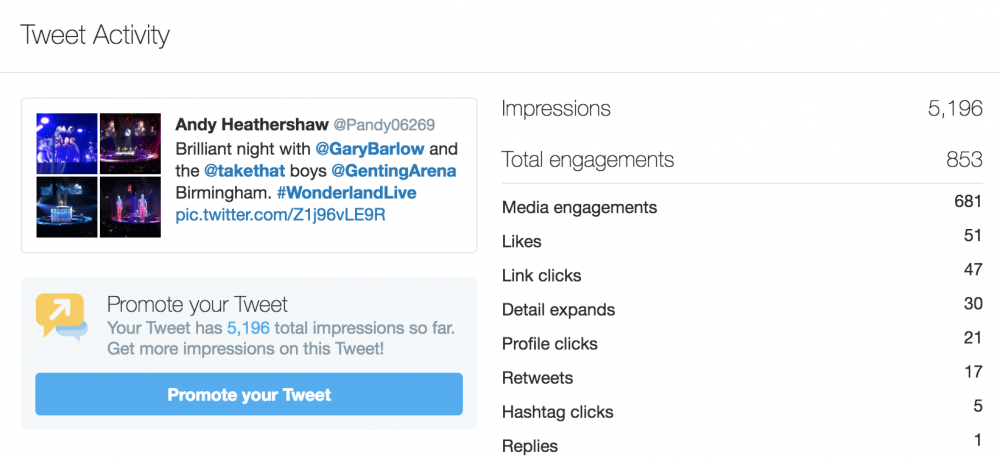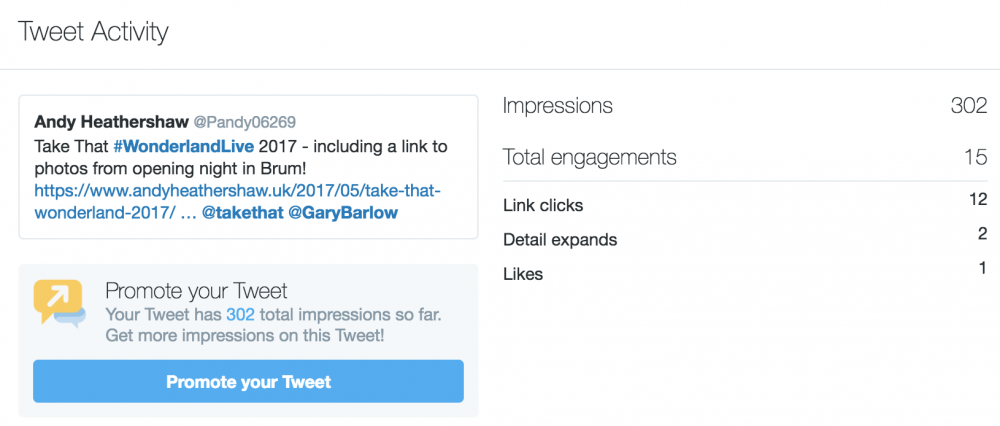Earlier this month, myself and James went to see Take That play the opening night of their Wonderland tour in Birmingham, and I learnt an important lesson when posting to social media.
It was a a great gig and I took lots of photos for my gallery. Like most people, I used the power of social media to quickly share the joy and the buzz I felt.
Brilliant night with @GaryBarlow and the @takethat boys @GentingArena Birmingham. #WonderlandLive pic.twitter.com/Z1j96vLE9R
— Andy Heathershaw (@andysh_uk) May 5, 2017
When I checked my website analytics the following day, I was amazed to see a surge in traffic of over 500% during the hour after I’d posted it.
I was even more amazed considering the tweet had no reference or link to my website. Only my Twitter profile has such a link.
On the Sunday (two days after the gig) I uploaded my photos and wrote a quick blog post about it.
I tweeted a link to this post with a photo and the same #hashtags and @mentions as the first one, and waited for the traffic to hit…
Take That #WonderlandLive 2017 - including a link to photos from opening night in Brum! https://t.co/nJqiffPzrG @takethat @GaryBarlow
— Andy Heathershaw (@andysh_uk) May 7, 2017
… but little came. Why?
It was all down to timing. You see during the gig, no-one was checking social media (other than a few broadcasting on Facebook Live.) Shortly after the gig, everyone would jump to Twitter or Facebook as they were leaving (like I did) to post their own version of what they’d just enjoyed.
It was also the opening night of the tour, so anyone who had tickets for later in the tour would no doubt have been looking for a sneak peek of what they had to come.
When you compare the analytics between the two posts, there is a staggering difference:


When posting to social media, timing is everything. Consider your target audience and when they are most likely to be checking their news feeds.
Post too early, and your post will appear too far down the newsfeed (“above the fold” theory.)
Post too late, and they won’t see it.
Add new comment